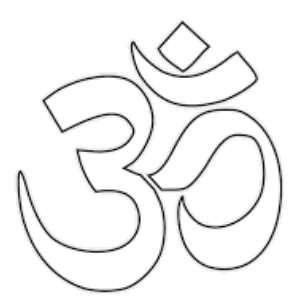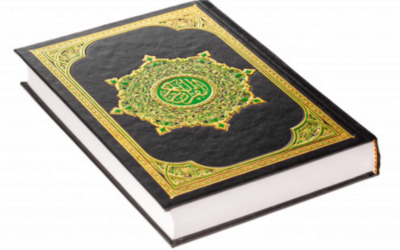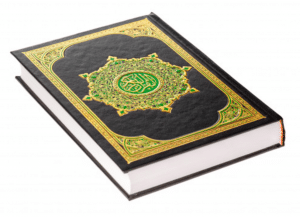Hinduism is the third largest religion in the world today with about 800 million adherents. The only two religions with more adherents are Christianity (2 billion) and Islam (1.3 billion). Hinduism is by far the predominant faith in India, where 82% of the population is Hindu. Hindus also make up notable percentages of the populations of other countries,1 such as:
- Bangladesh (11%)

- Bhutan (25%)
- Fiji (41%)
- Mauritius (50%)
- Nepal (89%)
- Sri Lanka (15%)
- Surinam (27%)
- Trinidad (25%).
Hinduism’s influence exceeds well beyond 13% of the world’s population due to its significance in the development of other religions such as Buddhism, Jainism, Sikhism, the New Age movement, and various other spiritual and philosophical movements in both the East and the West. Interestingly, there are over one million Hindus in North America.
The Origins of Hinduism
Hinduism does not have an individual founder. Scholars typically trace its origins to around 1500 B.C. in what is now known as India. It began as a polytheistic and ritualistic family of religions with various sacred rites performed by the heads of particular households or tribes. As time passed, the rituals became increasingly more complicated, and the need arose for a specialized priestly class to learn and administer them. During this period, the Vedas were developed (and later written down) to instruct priests how to perform these rituals.
As a result of this ritualistic emphasis, the priests became the means by which the Hindus could appease the gods. As such, the priests became incredibly powerful in Hindu societies. Around 600 B.C., the people pushed back against the control of the priests. The form of Hinduism that emerged focused on private meditation as opposed to external rituals.
Around 800 to 300 B.C. the Upanishads were written. The Upanishads might be very loosely considered Hinduism’s equivalent of the New Testament. The Upanishads expound on the idea that behind the many gods stands one ultimate reality known as Brahman. Brahman is an impersonal essence that is the basis of all existence. Hindu thinkers of the time began to understand Brahman as “nirguna,” which means “without attributes or qualities.”
After the writing of the Upanishads, the Hindu conception of Brahman continued to develop. Writers increasingly presented Brahman as something more like a personal god. Nirguna Brahman became Saguna Brahman, or Brahman “with attributes.” This personified form of Brahman is also called Ishvara.
Ishvara became known to humanity through the Trimurti (“three manifestations”) of Brahman known as Brahma (the Creator), Vishnu (the Preserver/Sustainer), and Siva (the Destroyer). Each of these deities has at least one devi, or divine spouse.
Ishvara became personified through ten incarnations of Vishnu known as avatars. These avatars include forms of animals (fish, tortoise, and boar, etc.) or persons (i.e. Rama, Krishna, Buddha). Epics such as the Ramayana and the Mahabharata, which includes the Bhagavad-Gita, tell stories about these avatars. In addition to the Trimurti and ten primary avatars of Vishnu, there are approximately 330 million other gods in Hinduism.
Schools of thought in Hinduism came to divide over the nature of the physical universe, some considering it real, others only illusory. The nondualists (advaita) see Brahman alone as real, and the world as an illusion. The qualified non-dualists (vishishtadvaita) affirm the reality of the universe but only as an extension of the being of Brahman rather than a separate thing. The dualists (dvaita) see Brahman and the universe as two distinct realities. Even within these categories, there are additional nuanced divisions. There are also many common practitioners who simply don’t bother about such questions.
Types of Hindus
There is not just one type of Hindu today. Some Hindus, particularly in the West, are younger professionals who are not necessarily devoted to a particular aspect of the Hindu religion. Some of these individuals hold to certain aspects of Hinduism as a cultural heritage but are not necessarily regularly practicing their Hindu faith.
Others may be described as intellectual Hindus. These individuals often take the textual history of Hinduism seriously and are well versed in the various scriptures of Hinduism such as the Vedas or Upanishads. Often such individuals are also knowledgeable in Hindu philosophical schools of thought and practice.
There are also those commonly referred to as folk Hindus. Such men and women practice the rituals, traditions, and customs of Hinduism with emphasis on local and household deities. They frequently offer sacrifices to the gods and observe various festivals. Sometimes these folk Hindus practice astrology, magic, and ancestor worship venerate idols, and make offerings to appease spirits, among other practices.
Due to the diversity within Hinduism, one cannot assume that a Hindu believes or practices exactly what you read in a textbook or have seen other Hindus practice. Each Hindu is unique in his or her own right. Even the three categories listed above of professional, intellectual, and folk Hindus are not exhaustive, nor entirely descriptive of all Hindu people. Rather, they are generalizations to help you understand the diversity among Hindu practitioners.
The Hindu Scriptures
The Earliest Hindu Scriptures are the Vedas which probably began developing around 1500 B.C. Veda means knowledge. There are four Vedas: the Rig Veda, the Sama Veda, the Yajur Veda, and the Atharva Veda. Each Veda divides into four parts: Mantras (the verses or hymns sung during the rituals), Brahmanas (explanations of the verses), Aran-yakas (reflections on the meaning of the verses), and the Upanishads (mystical interpretations of the verses).2 This is also known as Shruti, or “that which is heard.” Shruti literature is the Hindu equivalent to revealed Scripture.3
In addition to these primary writings, there are secondary writings known as Smriti, or “remembered.” The Smriti writings include the Ramayana (“Rama’s way”) and Mahabharata (“the great story”) epics. Within the Mahabharata is the Bhagavad Gita, which is the most popular of all Hindu Scriptures with the main character Krishna. While the Smriti scriptures are technically not as authoritative as the Shruti scriptures, they have exerted a much stronger influence on the culture of India through their popularity.
Other Smriti Scriptures include the Vedangas (codes of law, such as the Laws of Manu), the Puranas (the genealogies and legends of the gods), the Darshanas (philosophical writings), Sutras (rules of ritual and social conduct), and the Tantras (writings on attaining occultic power).4
References
| 1↑ | These figures and much of the other material for this article came from Dean Halverson’s excellent and concise summary. See also, Halverson, Dean C. “Hinduism” in The Compact Guide to World Religions. 87-102. Minneapolis: Bethany House, 1996. I highly recommend purchasing a copy of his book. |
|---|---|
| 2↑ | Ibid., 91. |
| 3↑ | Ibid. |
| 4↑ | Organ, 180, in Ibid., 91. |





